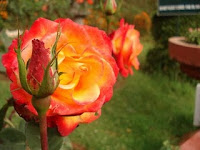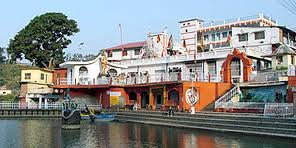Nilgiri means "Blue Mountains". The entire area of the Blue Mountains constitutes the present district of Nilgiri. The height of Nilgiri hills in the Blue Mountain range varies between 2,280 and 2,290 metres, the highest peak being Doddabetta at a height of 2,623 metres.
The Beauty Of Nilgiris Hills in Tamil Nadu
Nilgiris derives its charm from its natural setting. The steep hills and fantastically narrow valleys with numerous rivers and rivulets running in all directions with a few fine waterfalls here and there provide beautiful scenery. The temperate and most equable climate further heightens the attractiveness of the place. The major tea growing areas in the South are the Nilgiris hills and these tea gardens are beautiful to watch.
Adventure And Trekking In The Nilgiris
The Nilgiri hills in Tamil Nadu are a trekker's paradise. Landscaped by nature, the Nilgiri hills abound in trek for lovers of nature. There are treks and treks in whichever direction you turn and from whichever point you start. A trek can be full of thrill, excitement and adventure and a way of seeing and enjoying nature in all its beauty and splendour.
Trekking pamphlets are available with the Nilgiri Wildlife and Environment Association (NWLEA). There are guides who have sound knowledge of certain areas. If necessary, their services may be hired. And for further details contact the Tourist Information Office at Charing Cross, Ooty.
Location And Boundaries of Nilgiri Hills
High above the sea level, situated at the junction of the two ghat ranges of the Sahayadri Hills, Nilgiri district provides a fascinating view. Kerala on the west, the Mysore State on the north, and Coimbatore district on the east and south bound it. Headquarters of Nilgiris district is Udhagamandalam (also called as Ooty).
How to Get There
•Air
Coimbatore, 105-km from Ooty, is the nearest airport. It has daily flights to and from Chennai, Bangalore, Cochin and Trivandrum.
•Rail
Ooty is on the narrow gauge railway connected to Mettupalayam (47-km), which is directly connected to Coimbatore and Chennai. The famous toy train connects Ooty with Mettupalayam and Coonoor.
•Road
A good network of roads and national highways connect Ooty with all major towns and cities. There are regular bus services to and from Coimbatore, Trichy, Bangalore, Madurai, Kanyakumari, Mysore, Palghat, Calicut, Tirupati and other important destinations in South India. Ooty is also well connected with major cities of Kerala and Karnataka.
Coonoor and Kotagiri are also well connected by road with the major cities and towns of the state. For local transportation, auto rickshaws and taxis are available.
Hill Stations In The Nilgiri Hills
•Ooty ( Udhagamandalam )
Udhagamandalam (Ooty), the headquarters of Nilgiri district, is popularly known as the "Queen of hill stations' among the tourist circuits. It is situated at a distance of 105 kilometres away from Coimbatore. The Botanical Gardens and the Doddabetta peak (the highest peak in the Nilgiris, located 10-km from Ooty) are the major attractions.
•Kotagiri
Kotagiri is located 16-km away from Ooty and it is the oldest hill station of the Nilgiris. Kotagiri is situated at an altitude of 1,950m, which was once a British hill resort, that dates back to 1819 and is quieter than Ooty. Elk falls, Kodanad viewpoint and Catherine falls are a few places to visit.
•Coonoor
Coonoor is situated on the eastern side of the southern extremity of the Doddabetta range, at an altitude of 1,858 metres above the sea level. It is the second largest hill station in the Nilgiris. Coonoor is located 19-km away from Ooty and is essentially a small tea garden town where the weather remains pleasantly cool throughout the year.
Fair & Festival in Nilgiri Hills
•Tea And Tourism Festival
The Department of Tourism, Government of Tamil Nadu and Ministry of Tourism, Government of India, jointly celebrate the annual Tea and Tourism Festival during the months of January-February in the Nilgiris. The festival is held for 3 days. Varieties of tea are on display. Visitors can also taste and select from the wide varieties of tea available.
•Summer Festival
There are several beautiful hill stations in Tamil Nadu. With the Summer Festivals, the hills are even hospitable to welcome the visitors. The summer festival is held in the 'Queen of Hill Stations', the evergreen Ooty; the exquisite Kodaikanal and the salubrious heights of Yercaud - where boat races, flower and fruit shows are specially organized.
Major Attractions of Nilgiri Hills
The Nilgiris, the most popular hill resort of the south has a number of tourist of attractions, which chiefly include the Botanical Gardens, Doddabetta Peak, Mukkurthi Peak, the Pykara Dam and sprawling tea plantations.
•Botanical Garden
Botanical gardens are a major tourist attraction for those who visit Ooty. They sprawl over 50-acres and lie on the lower slopes of Dodabetta peak, which is the highest point in Ooty. Marquis of Tweeddale established these gardens in the year 1848.
•Mudumalai Wildlife Sanctuary
The Mudumalai wildlife sanctuary is located where the Nilgiri Hills, the offshoot of the Western Ghats meet the Eastern Ghats. The Mysore-Ooty highway runs through the sanctuary, following the course of the Mayyar River, which separates Mudumalai from Bandipur.
This 321-sq-kms wide sanctuary encompasses a National Park measuring an area of 103-sq-kms. The sanctuary has varied mixture of flat land, open grassland, swamp and valleys. Apart from the wide range of animal and bird life, the rich fauna of this sanctuary has made Mudumalai very popular with wildlife enthusiasts.
•Ooty Lake
An artificial lake constructed in 1824 by Mr. Sullivan. The lake garden is an added attraction.
•Doddabetta
Doddabetta is the highest peak (2,623 mts.) in the Nilgiris and offers beautiful vistas of the hill ranges, plateaus and plains around. It is 10-km from Ooty. There is a good motorable road to reach the peak.
•Dolphin's Nose
Dolphin's Nose is about 12-km from Coonoor. The Nose is unique rock of tremendous proportions, jutting out of the face of the hillside in formation in which its name suggests. It exposes a vast panorama, which encompasses Catherine falls.
•Pykara
Pykara is situated about 21-km from Ooty. Some of the tourist attractions of this place are well-protected fenced sholas, Toda settlements, undisturbed grassy meadows and also a good wildlife habitat. The Pykara Dam, Pykara falls and the reservoir attracts many tourists. A boathouse with restaurant and a rest house are available at Pykara.
•The Mukkurthi Peak and National Park
About 40-km from Ooty there is a beautiful peak called "Mukkurthi". The Mukkurthi National Park is located on the Southern corner of the Nilgiri Plateau. The Kollaribetta and Nilgiris Peak are other major peaks around. A number of little perennial streams flow between these peaks, which fall into Bhavani Puzha. Silent Valley is located on the Western side in the Western Ghat, which is a feast to the visitor's eye.
•Kodanad Viewpoint
Kodanad Viewpoint located at a distance of 16-km from Kotagiri commands a panoramic view of the plains and the eastern slopes of the Nilgiris.
•Laws Falls
Laws falls are a beautiful picnic spot, named after Lt. Colonel Law, who traced and mainly constructed the Coonoor Ghat. They are about 5-km below Coonoor on Mettupalayam road. The height of the falls is about 180 feet. There are vast stretches of undisturbed sholas and it is a paradise for naturalists.
Places to stay in Nilgiri Hills
Accommodation is available at the hotels, guesthouses and lodges in the hill stations in the Nilgiris (Ooty and Coonoor). Coonoor has its share of luxury and budget hotels to guesthouses and picturesque resorts. Upper Coonoor is highly recommended.
In Ooty, varied accommodation options varying from luxurious and economy class hotels to lodges and resorts are available. Both Indian and Western style accommodation and food are available. Prior booking is advisable, especially during the summer months. It is also possible to get paying guest accommodations through brokers haunting the bus stand/railway station.
Click here for Hotels in Nilgiri Hills
Shopping in Nilgiri Hills
Just about anything available in the cities can be had at Ooty with the added attraction of leisurely shopping. Exclusive Nilgiri products including Nilgiri tea, fruits, natural oils like Eucalyptas, Toda embroideries, plant nurseries are easily available in the town. Co-operative Super Market and Municipal Market are some of the best places for shopping fruits and general groceries. Kairali of Kerala Handicrafts and Poompuhar of Tamil Nadu Handicrafts have their showrooms near to Super Market Buildings on Charring Cross.
Shopping in Nilgiri Hills
•Coimbtore - 55 km
•Coonoor - 13 km
•Erode - 113 km
•Namakkal - 161 km
•Palni - 180 km
Tourist Office in Nilgiri Hills
Tourist Office, Government of Tamil Nadu Supermarket Complex Charring Cross Ooty ( Udhagamandalam ) -1
Tourist Information about Nilgiri Hills
•Area (District Area): 2,459-sq-kms
•Population (district): 7,10,210 (1991 Census)
•Latitude: N 11° and 11° 55'
•Longitude: E 76°13'and 77° 2'
•Altitude: 2,280 and 2,290 metres
•Clothing: Heavy woollen in winter and light woollen in summer
•Languages Spoken: Tamil, Kannada, Malayalam and English
•STD Code: 0423
•Climate: Temperate and Most Equable
•Temperature Range (deg C):
◦Summer- Max 25ºC, Min 10ºC
◦Winter- Max 21ºC, Min 5ºC
•Rainfall: 1,960 mm
Tour Packages of Nilgiri Hills
Few Image By Cam
Tour Packages of Nilgiri Hills ,Mysore,Banglore
- Day 01 : Banglore – Mysore
Arrival at Banglore Airport & drive to Mysore. Arrive & Check in at Hotel. Later proceed for sightseeing tour visiting Brindavan Gardens, Chamundeswari Temple etc. Overnight stay at Mysore. - Day 02 : Mysore - Ooty
After breakfast check out from the hotel and drive to Ooty. Arrive & Check in at Hotel. Evening free for leisure & own activities. Overnight stay at Ooty. - Day 03 : Ooty
After breakfast, proceed for sightseeing tour visiting Botanical Gardens, Ooty Lake, Lamb's Rock etc. Overnight stay at Ooty. - Day 04 : Ooty - Kodaikanal
After breakfast check out from the hotel and drive to Kodaikanal. Arrive & Check in at Hotel. Overnight stay at Kodaikanal. - Day 05 : Kodaikanal
After breakfast, proceed for local sightseeing tour visiting Berijam Lake, Bryant park, Rock Pillar etc. Overnight stay at Kodaikanal. - Day 06 : Kodaikanal – Coimbatore / Banglore Airport
After Breakfast, check out from the Hotel & transfer to Coimbatore / Banglore Airport.













































